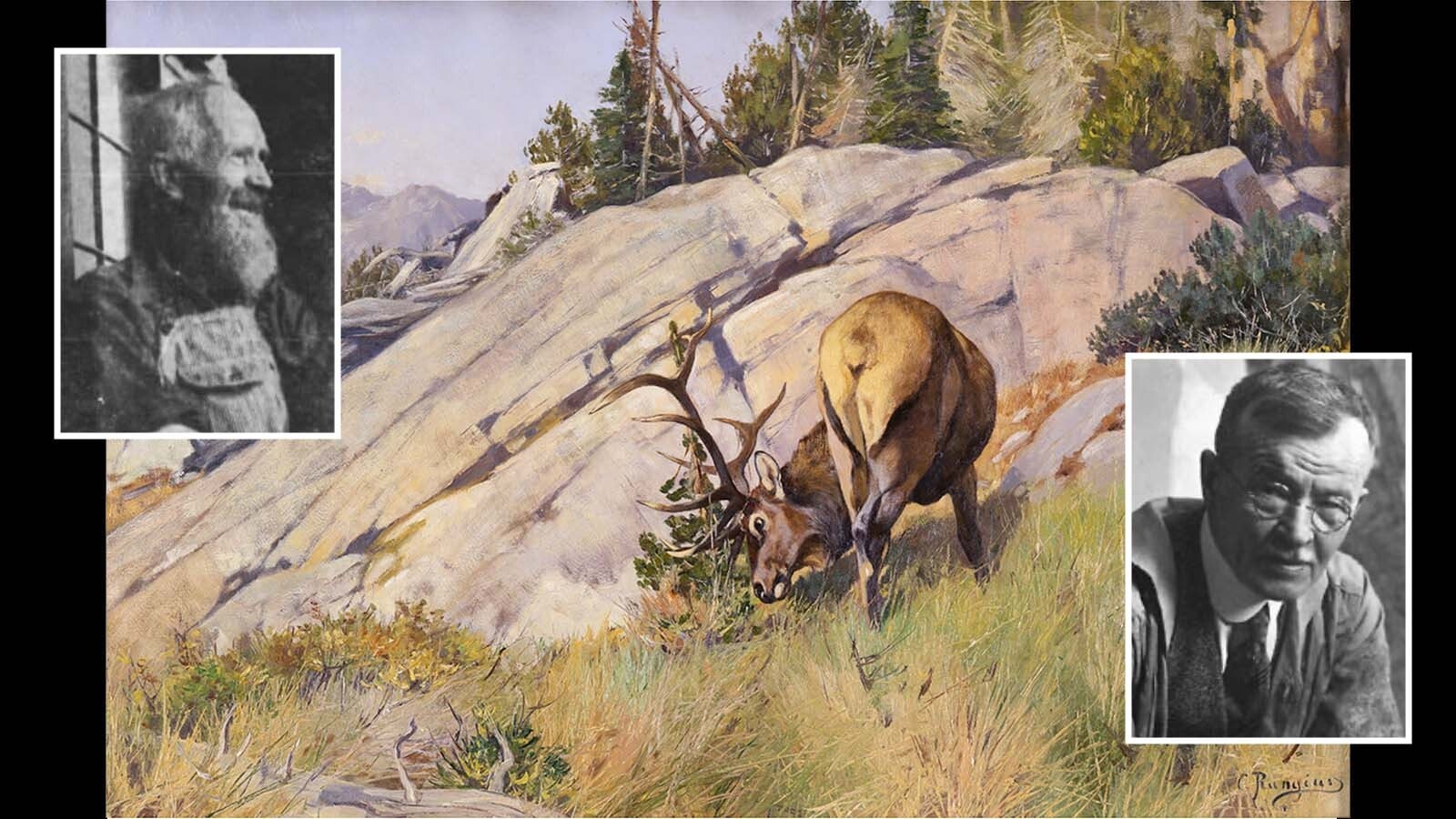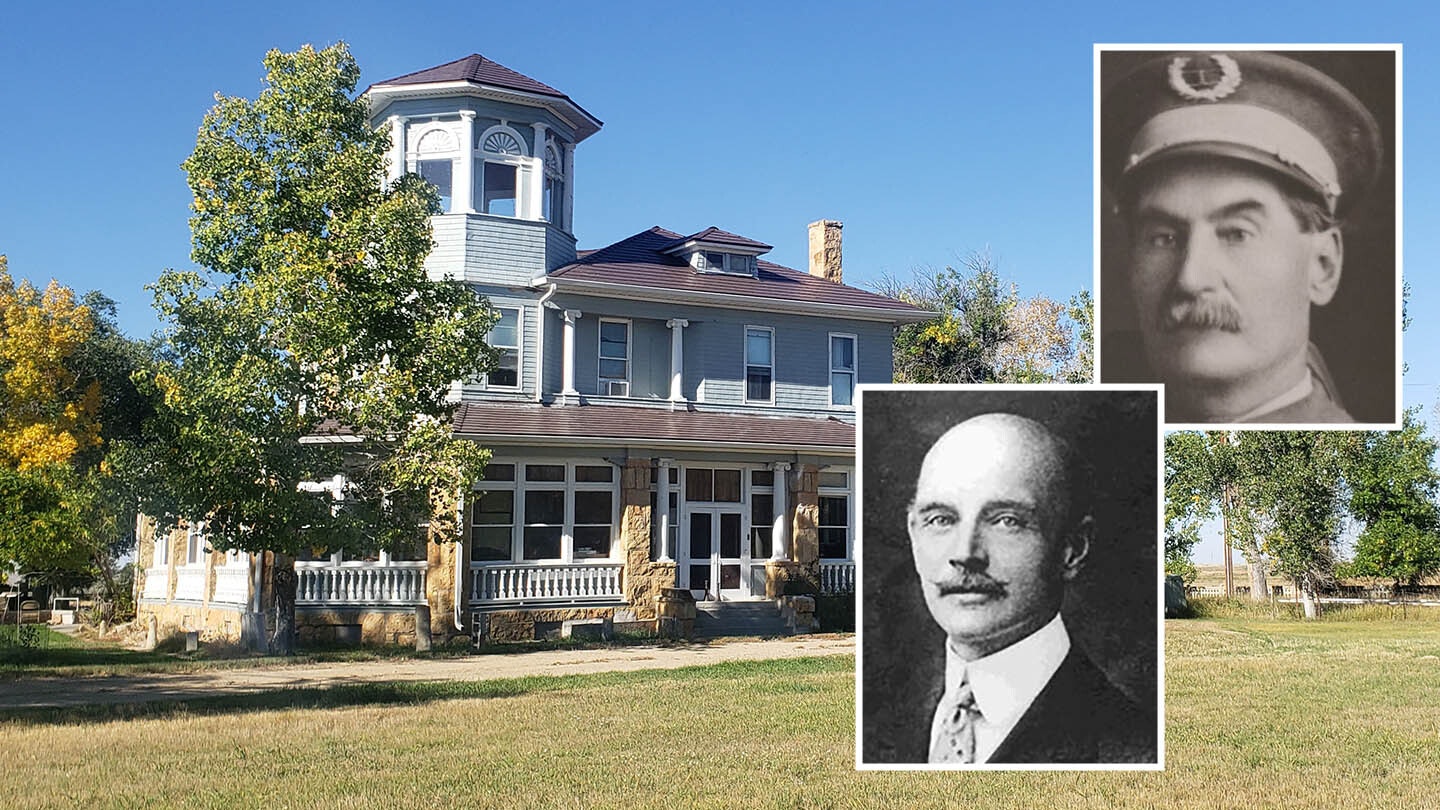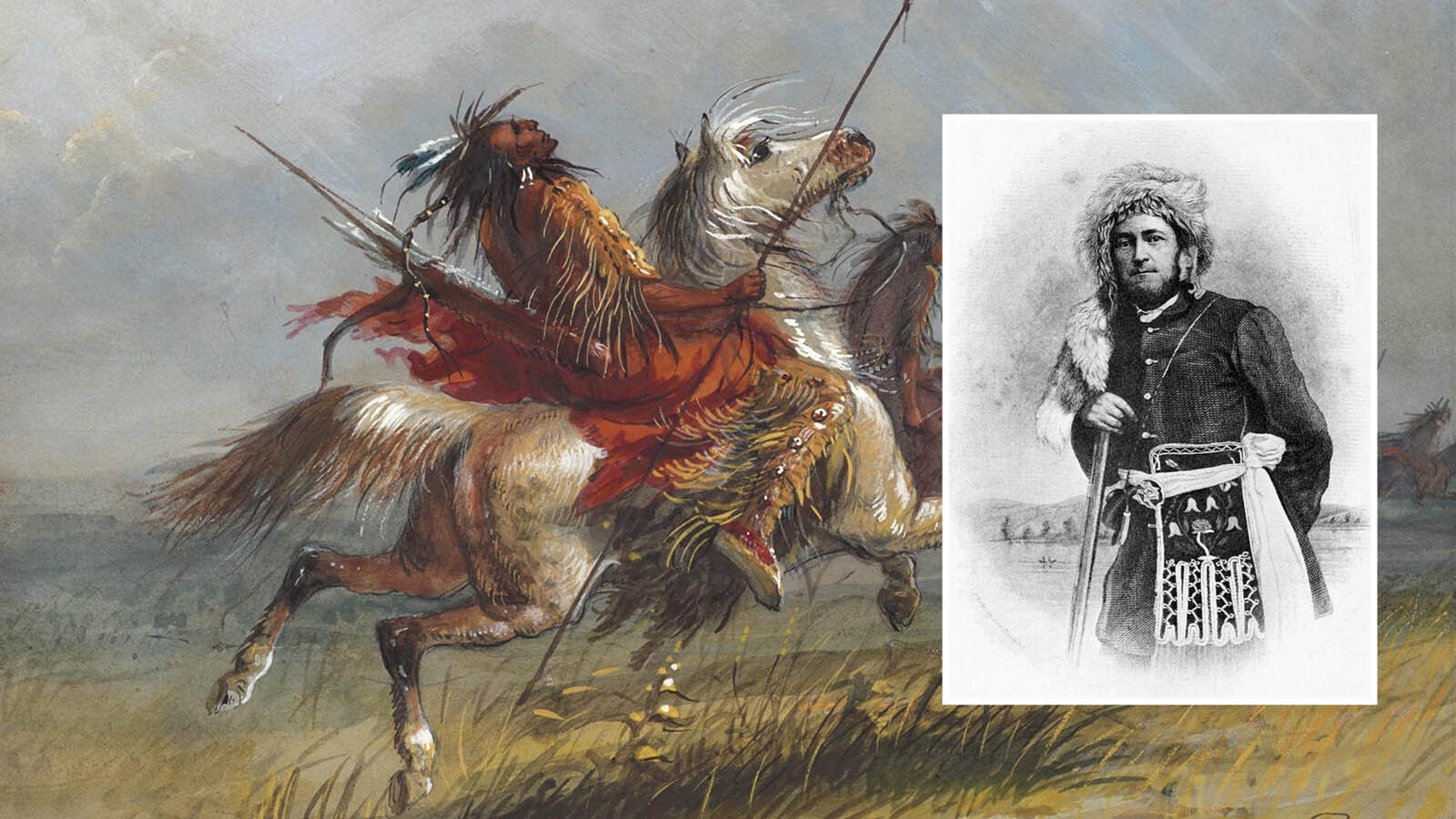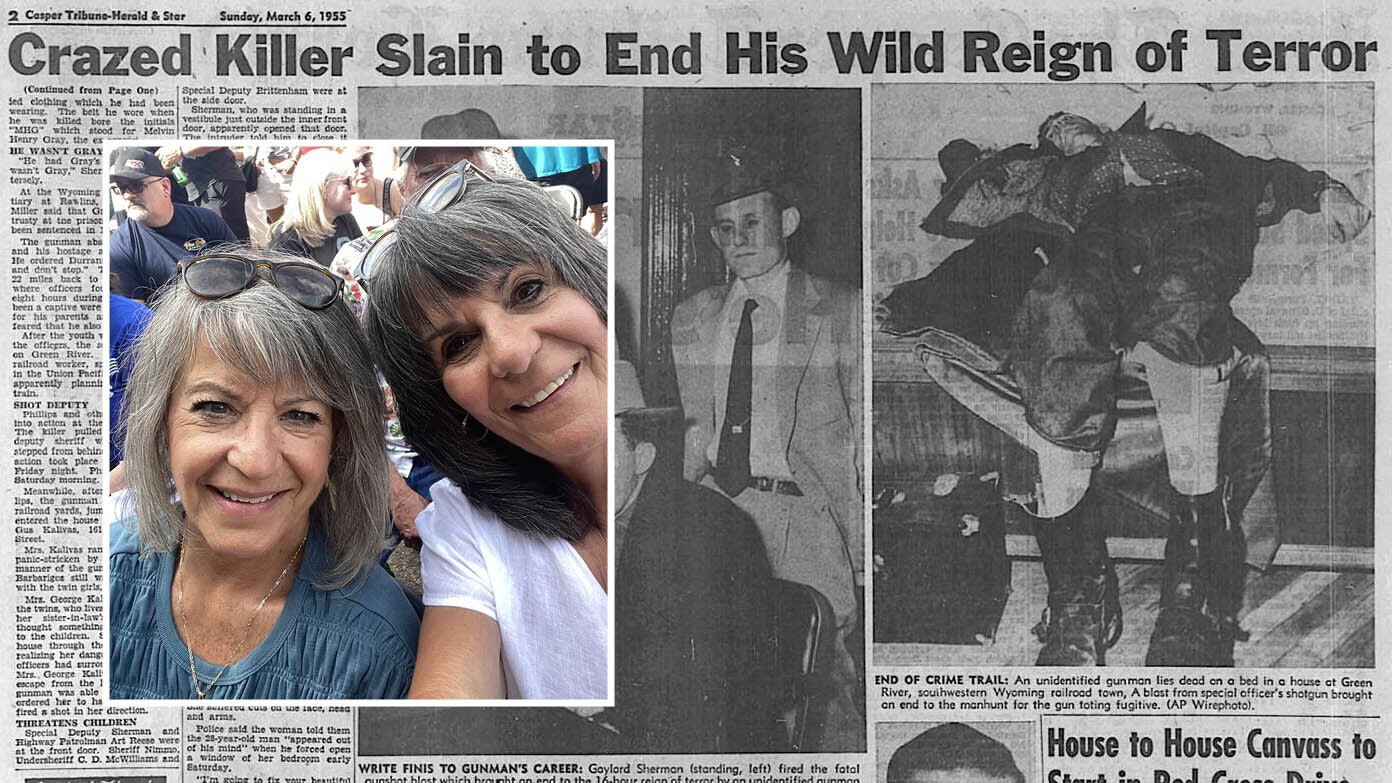When Mark Twain and Charles Dudley Warner published their satirical novel “The Gilded Age: A Tale of Today” in 1873, they unwittingly named their period in American history.
It truly was a time of surficial glitter with a foundation of corruption. The satirists coined an apt slogan for the times, “Get rich, dishonestly if we can, honestly if we must.”
During the Gilded Age, the Rocky Mountain West had its share of speculation in get-rich-quick schemes. One such design happened partly within southern Wyoming.
Confidence men find the most fertile fields for profit in the hearts of the greedy. In the 1870s, the American West was a target-rich environment for clever charlatans.
The almost-endless bounty provided by the plenteous lands of the West provided a string of mineral discoveries such as gold, silver, precious stones, energy sources and industrial resources.
Prospectors and speculators combed the landscape for the next economic boom-creating find.
Conmen and fly fishermen use similar tactics. They create an irresistible illusion and dangle it in front of hungry prey. When the victim goes for the temptation, the hook is set and the fish is reeled in. The stage is set for unscrupulous villains to place lures before their intended prey.
A well-conceived confidence trick might attract collateral victims as well.
“One who deceives will always find those who allow themselves to be deceived,” Niccolo Machiavelli famously said.
Diamond Dreams
The clever confidence scheme of this tale was the brainchild of Phillip Arnold, who in 1870 was employed by the Diamond Drill Co. Arnold likely purloined a quantity of industrial-grade diamonds used to make drill bits.
He mixed his ill-gotten diamonds with rubies, sapphires and garnets acquired from other sources. Arnold and his partner John Slack perfected a cunning performance meant to bilk greedy speculators.
The tricksters arrived in San Francisco looking like they had descended from their diggings but a few hours before.
Arnold had been an unsuccessful 49er during the great gold rush, so he knew how to perfectly accouter the duo and create the illusion of grizzled prospectors.
Once appropriately costumed, the confidence men affected the roles of the ignorant bumpkins.
In this they relied heavily upon their native Kentucky accents, then Arnold and Slack needed to find a mark who would not hesitate to take advantage of two simpletons.
The Mark
They had done their homework in identifying their mark — George Roberts, a prominent businessman.
The bedraggled conmen showed up at Roberts’ office and asked to leave a pouch for safe keeping until the banks opened. When the two were reticent to reveal the contents of the mysterious pouch, Roberts’ curiosity was piqued.
One of the prospectors blurted out that the pouch had rough diamonds found in Indian territory. Pretending that the discovery required additional exploration before filing a claim, the conmen requested Roberts keep their find quiet.
Once the prospectors departed, Roberts almost immediately leaked the news to financier William C. Ralston. In similar fashion, the financier involved Asbury Harpending of London, then peddling silver stocks.
The greedy triumvirate were primed to make a killing after buying out Arnold and Roberts. Such simple men were unlikely to know the true value of a diamond field and might settle for selling out for a pittance.
The tempting bait attracted a school of hungry fish.
When Arnold and Slack returned to visit Roberts, the swindlers brought a bag containing roughly 60 pounds of diamonds and rubies. The conmen claimed that a jeweler had confirmed the value of the stones was roughly $600,000 (about $15 million today).
As the rumor of the find spread, the three previous marks were joined by Gen. George Dodge and William Lent. The five marks offered to buy out Arnold and Slack for a mere $50,000. The conmen wished to sink the hooks deeper and negotiated a sale for $100,000.
Slack wanted $50,000 up front and the remainder when he returned from the next visit to the diggings. The confidence scheme was working very well.
Setting The Hook
Some confidence men would have taken the money and run but Arnold and Slack were sharks who could smell blood in the water.
Assuming aliases they immediately booked passage to London and made large purchases of uncut stones from Leopold Keller of the firm Pittar, Livingston & Co., purveyors of gems.
In summer 1871, Arnold and Slack returned to San Francisco after salting an area in southern Wyoming Territory with some of their purchased stones. The conmen boasted to return to a place in the diamond field that would net roughly $2 million in one visit and bring that treasure to San Francisco.
“Gentlemen, these are beyond question precious stones of enormous value,” said Charles Lewis Tiffany
The remainder of the purchased stones were scattered on a billiard table to further entice Harpending. A 10% sample of the stones was sent to C.L. Tiffany in New York City for appraisal. An additional sample was displayed in the window of a prominent San Francisco jeweler to further entice investors.
The secret was now public knowledge, which caused quite a stir. Speculation as to the location of the diamond field was rife.
In October 1871, the bait was sweetened when Tiffany declared the mere sample purchased for $20,000 by the conmen to be worth $150,000. Among those present to hear the good news were George B. “Little Mac” McClellan and Benjamin F. “Spoons” Butler.
These famous former Union generals were included to attract further investors and to provide political assistance in overcoming bureaucratic issues should the diamond field be within Indian lands. New York Tribune Editor Horace Greeley also was present.
The investors handed Arnold $100,000. The swindle had swollen from the netting of a few fish to an entire school of suckers. They needed more bait to land more marks.
Soon, Arnold was standing before Leopold Keller, from whom he purchased more uncut stones worth $8,000 for the final play in the con. The new stones were salted in preparation for an inspection by the investors.
Will They Be Reeled In?
The marks were not completely stupid and arranged to have a respected mining engineer examine the field when weather permitted.
The inspection was put off until May 1872. Henry Janin, the mining engineer, met with Arnold, Slack, Harpending, Dodge and Alfred Rubery in Rawlins. Arnold and Slack took pains to make their way to the “diamond field” as confusing as possible. The conmen pretended to be lost for a while and spent four days wandering.
On June 4, they arrived at the salted site.
Arnold helped the inspection team by pointing out likely digging places where, sure enough, shallow digging turned up diamonds, sapphires, rubies and emeralds.
Janin was impressed and the speculators offered him the chance to purchase stock in the find at a bargain of $10 a share. Visions of instant riches beclouded Janin’s judgment. Though the conmen had heavily salted only an area of roughly an acre, Janin laid out claim stakes for a parcel of 3,000 acres. The mining engineer was entangled in the net as deeply as the investors.
Slack soon disappeared with his earnings, but Arnold wanted more. He was paid another $150,000 after leading Janin to the site. The conman added to his take by selling $300,000 in stock to Harpending. Arnold left town thereafter to rejoin his family in Kentucky. The swindlers cleared out with their earnings.
The Karma Police And Engineers Never Sleep
In October 1872, a chance meeting on a train began the unravelling of the hoax.
Henry Janin met geologist Clarence King, leader of the U.S. government’s Fortieth Parallel Survey. King’s team had done intensive mapping and mineral evaluation of the lands near where Janin hinted the diamond field was located.
The federal survey failed to find any diamond fields in their investigations of the area.
King was concerned that missing such an important find would reflect badly upon the work of his team. King, Sammuel F. Emmons and A.D. Wilson traveled to Fort Bridger and hired two packers and a mule team. They set out in the biting cold, trekking 150 miles to the approximate location of Janin’s “diamond field.”
Soon they found Janin’s claim stakes and began their assessment. Crawling upon hands and knees they found diamonds and other gemstones.
The initial euphoria faded, and there were troubling thoughts that something didn’t add up. The ants gave away the game. The anthills containing gems were those where human footprints were visible. The anthills lacking human footprints were barren of precious stones.
The federal topographers did a series of tests, including a 10-foot-deep trench. To King and Emmons, the results were clear. The gems had been planted.
The diamond field was a hoax.
News exposing the con traveled slower than the swindle itself. King and his team had been followed by J.F. Berry, who presented himself as New York diamond broker but really was an agent for George Hearst.
Berry had been hired to find the location of the diamond field. Janin, though paid $1,000 by Hearst to assess the find, was tight-lipped about the location. Berry was sent to follow King.
He followed King’s team as discretely as his spyglass permitted. When King’s group camped and began their evaluation, he knew the location. He wandered into King’s camp claiming to be a diamond merchant and learned the results of their investigation.
King did not trust this surprise guest, but the secret of the fakery was out. King feared that Berry would do something nefarious with the information.
Wishing to get ahead of whatever Berry was up to King and Wilson rode 45 miles through badlands to the Black Butte station. Once there, he could not trust the telegrapher with such valuable news and took the first westbound train.
The news of the hoax was worth a lot of money. Berry revealed the location of the field for a price but did not reveal the hoax.
He showed diamonds to investors in Fort Bridger and Salt Lake City and generally raised the level of excitement about the diggings. He busily lined his pockets encouraging investments and the outfitting of prospectors to the bogus diamond field.
King returned to San Francisco on November 10 and met with Janin. After revealing the findings of the testing, Janin hesitantly agreed that King’s team had reached the proper conclusion.
Marks Usually Need Convincing
The next morning King and Janin met with the investors. One investor shook off his shock long enough to attempt to bribe King to keep a lid on his results for a short time to allow worthless shares of stock to be pawned off while they yet had value.
King would not hear of such a thing and proposed to publish a letter in newspapers. He convinced the board to postpone an upcoming sale of 100,000 shares. His letter would not be published until he could prove that the diamond field was a fake.
Once people are taken in by a hoax it often is difficult for the victims to believe they could have been hoodwinked. The board members were no different.
King agreed to lead a party including Janin and Gen. David Colton, manager of the diamond company, as well as others to reexamine the location. They set out the day after the board meeting.
The weather was exceptionally cold, estimated at 20 degrees below zero. The party braved the bitter frost and winds and pressed forward. After examining the claim area for two days, it was agreed that the diamond field was a fraud. On Nov. 25, Colton reported the bad news to the board.
The board dissolved the company and agreed to publish King’s letter. The San Francisco Chronicle put it on page three of the Nov. 26 edition with a string of kicker headlines:
UNMASKED!
The Great Diamond Fiasco
THE MAMMOTH FRAUD EXPOSED
The Chronicle was somewhat more compassionate with the victims of the hoax than one might expect, had they not been captains of industry and political leaders. The diamond company had planned to sell $10 million worth of stock shares, but the offering never affected the public.
The paper reported the wealthy marks “could well afford” their losses. The article continued, “… it is much better that the loss and laugh should fall upon our smart men …”
The paper proclaimed that Clarence King burst the bubble of the fraud with extraordinary scientific knowledge and even a skilled mining engineer was taken in.
Aftermath
Justice is an elusive creature. The dramatis personae in this play of deception and greed went on with their lives. Slack and Arnold were indicted for fraud. Before they could be found and arrested, the charges were set aside.
Perhaps the political connections of those netted by the fraudsters thought it best to endure their losses and put an end to this embarrassing chapter.
Slack is reputed to have either eluded justice by passing away or becoming an undertaker in New Mexico.
Arnold used his “earnings” to buy a home and 500 acres of land, the deeds of which were recorded safely in the name of his wife. The conman settled with William Lent for the return of $150,000. Some estimates were that Arnold made between $300,000 and $600,000.
By 1873, Arnold owned a bank in Elizabethtown, Kentucky. In 1878, he was mortally wounded in a dispute with another banker that was settled with a shotgun. His estate contained a tidy sum for his family to live on.
Many of the marks complained of having lost significant sums of money in the swindle. There were inquests and a lawsuit.
Before King’s investigation was published, Congressman Gen. Benjamin Butler pushed through a mining bill that allowed the diamond company to buy the federal land surrounding the diamond field. He was left holding 1,000 shares of worthless stock.
Most of Arnold and Slack’s victims were too embarrassed to publicly admit to their greed getting the best of them
Clarence King and his team were the heroes of this tale. King rode the good will of exposing the hoax to international recognition. He was one of the nation’s first scientific celebrities and put the government surveys of the American West in a positive light. He even became great friends with some guy named Teddy Roosevelt.
King published many important works on geology, but will best be remembered as the sleuthing scientist who uncovered one of the greatest swindles of a time rife with deceptive get-rich-quick schemes.
The Chronicle (Nov. 26, 1872, page 2) has perhaps the best summation of the Great Diamond Hoax: “There has never in the world, to our knowledge, been so audacious and so unique a scheme of fraud practiced.”
Diamonds In Wyoming
The 1975 discovery of kimberlite pipes in southern Wyoming keeps the hope of finding a diamond field alive to this day. A small percentage of such pipes bring diamonds from the earth’s core to the surface.
Diamonds are found along the Colorado/Wyoming border. Many of the gems are microdiamonds, but larger diamonds of quality have been found.
It is my understanding that no mother lode has of yet been identified. However, there are some areas of interest to whet the appetite of those looking for the next big find.
Is the past echoing or repeating? Only time and more science will tell. Perhaps modern-day confidence men or women are setting up greedy investors for the next big diamond swindle.





